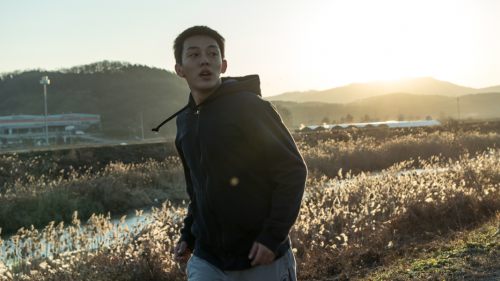TIFF 2018 Review: LONG DAY’S JOURNEY INTO NIGHT Is Not About The Destination
After his critically praised debut feature Kaili Blues, Bi Gan returns to his hometown of Kaili in southern China with Long Day’s Journey Into Night, which has nothing to do with the play, and everything to do with breaking the laws of cinema and physics with an ambitious and astonishing fever dream of a film that will lose some viewers along the way, but will reward those who stay with it.
The film follows Luo Hongwu (Huang Jue), a man who returns to his hometown for a funeral, but instead finds himself on a trip down memory lane as he is obsessed with finding Wan Qiwen (Tang Wei), a woman he had an affair with more than a decade ago.
Bi Gan spends the first half of the film quickly establishing a neo-noir atmosphere and mood. Dream-like, neon-lit streets fill the hypnotic world of Long Day’s Journey Into Night. The film’s narrative structure owes much to Wong Kar-wai and Hou Hsiao-hsien, but also Tarkovsky by way of David Lynch. At my press screening at TIFF, some audience members left before the half-way mark, and I could not blame them. Bi Gan dares us to follow his complicated plot as he jumps back and forth in time with quick and unexpected cuts that keep you guessing if what you’re seeing is happening now, or a memory. “The difference between memories and movies is that movies are false, and memories are half true and half fake” says the main character in an early scene.
Like in his first feature, Gan uses a long take to tell most of the second half of the story. In one of the ballsiest moves in recent film history, we follow Luo Hongwu as he enters a cinema and puts on 3D glasses – a cue to the audience to do so as well – and begins to fall asleep. Suddenly the title card Long Day’s Journey Into Night pops up in bright neon colors in the middle of the screen, 75 minutes into the film. From then on, we embark on a cinematic journey like no other, as the rest of the film’s runtime is spent on a 50-minute long-take sequence entirely in 3D.
Once we enter the 3D sequence, the camera goes through a tunnel, observes a fight, flies through the air (presumably with a drone), follows a song and dance number, and even an impeccably well-timed game of ping pong. Is the sequence a gimmick? Absolutely, no question about it. But Bi Gan manages to tie it all together in the end through feeling and symbolism in a way that makes it perfectly reasonable to spend half the film on a 3D sequence that may be a dream.
By the time Long Day’s Journey Into Night ends, you will feel like you got out of a gritty roller coaster ride through the wandering memory of a nostalgic man. There will be those who are put off by the film’s symbolism and choice of style over substance, but those who stick with it will see there is more than just style in this film, even if that style is totally audacious.



